Jul
17
2010
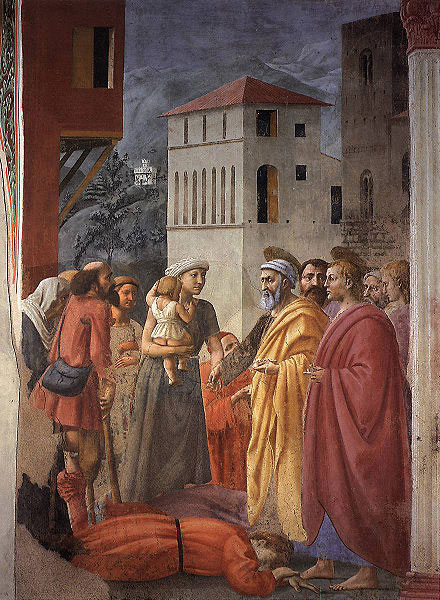
But each one is tempted when he is drawn away by his own desires and enticed. Then, when desire has conceived, it gives birth to sin; and sin, when it is full-grown, brings forth death. (James 1:14-15)
The structure of God’s work in the world finds its origin in His trinity: Word, Sacrament, Government (Discipline). Often in the prophets, the man of God is given a sign which is a type of a greater event to come. The prophet is the sacrament that mediates the Word of discipline to the People.
Continue reading
Comments Off | tags: Abraham, Acts, Atonement, Balaam, Communion, Genesis, Isaiah, Jezebel, Judas, Moses, Replacement Theology, Totus Christus, Typology | posted in Biblical Theology, The Last Days
May
19
2010
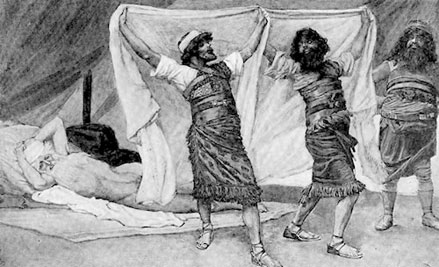
“and their faces were backwards so that they did not see their father’s nakedness” (Gen. 9:23)
James Jordan has some fascinating comments on Ham’s sin in Genesis 19:
Continue reading
Comments Off | tags: Aaron, Atonement, Genesis, Ham, James Jordan, Noah, Priesthood, Tabernacle | posted in Biblical Theology, Quotes
May
3
2010
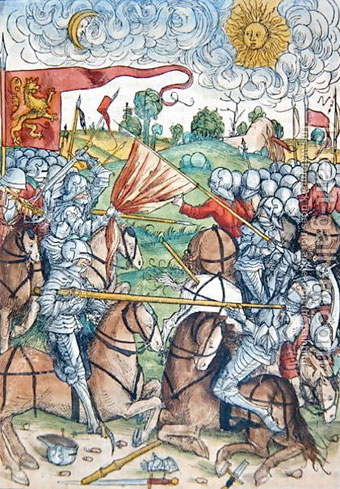
“Blessed are the meek, For they shall inherit the Land.” (Matthew 5:5)
Some more thoughts related to Walking on Water. Please read Joshua 3 before proceeding.
If the New Jerusalem is the fulfilment of the “wall of water” at the Jordan crossing, the Lamb at the centre of the city is the Ark in the middle of the riverbed, surrounded by a human government. [1] If you know your James Jordan, the Ark of the Covenant was an image of the Light that shone on Day 1. The Lamb remains at the centre of the city, surrounded by the firstfruits saints, until the last saint is redeemed and Christ hands the kingdom to the Father.
Continue reading
Comments Off | tags: Against Hyperpreterism, Ark of the Covenant, Atonement, Communion, Hezekiah, James Jordan, Joshua, Melchizedek, Resurrection, Revelation, Satan | posted in Against Hyperpreterism, Biblical Theology, The Last Days
May
1
2010

or The New Jerusalem is Temporary
He will set up a banner for the nations, And will assemble the outcasts of Israel, And gather together the dispersed of Judah From the four corners of the Land. Also the envy of Ephraim shall depart, And the adversaries of Judah shall be cut off; Ephraim shall not envy Judah, And Judah shall not harass Ephraim. But they shall fly down upon the shoulder of the Philistines toward the west; Together they shall plunder the people of the East; They shall lay their hand on Edom and Moab; And the people of Ammon shall obey them. The LORD will utterly destroy the tongue of the Sea of Egypt; With His mighty wind He will shake His fist over the River, And strike it in the seven streams, And make men cross over dry-shod. There will be a highway for the remnant of His people Who will be left from Assyria, As it was for Israel In the day that he came up from the land of Egypt. (Isaiah 11:12-16)
Everyone knows what “walking on water” means. You can do the impossible. Often it has a negative spin, as when it is applied to politicians with a Messiah-complex.
But what does it actually mean in the Bible? And why did Jesus do it?
Continue reading
6 comments | tags: AD70, Against Hyperpreterism, Atonement, Baptism, Daniel, Herod, High Priest, Isaiah, Passover, Tabernacle, Totus Christus | posted in Biblical Theology, Creation, The Last Days, The Restoration Era
Apr
16
2010
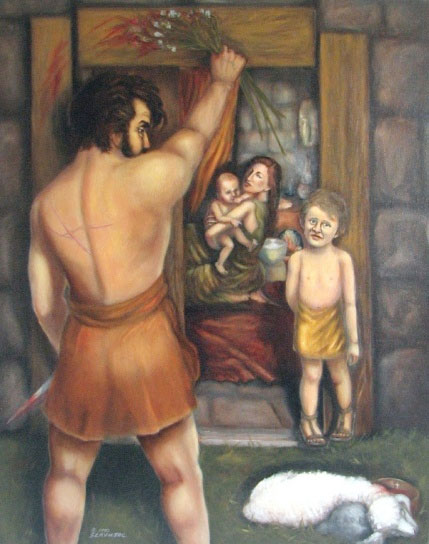
“Do not forgive them, Father. They know exactly what they are doing.”
THIS POST HAS BEEN REMIXED AND INCLUDED IN GOD’S KITCHEN: THEOLOGY YOU CAN EAT AND DRINK
You must be logged in to see the rest of this post.
Join now for a year for $15!
Throughout the Bible there are two doors, or more correctly, a door and a window.
Both of them involve blood. The first takes us out of the world. The second puts us in government. The first is the Passover door, the second is a window in Jericho. One mirrors the other chiastically in the journey from slavery to Sabbath.
Continue reading
Comments Off | tags: AD70, Atonement, Feasts, Halden Doerge, Passover, Pentecost, Tabernacle | posted in Biblical Theology, Quotes, The Last Days
Feb
19
2010
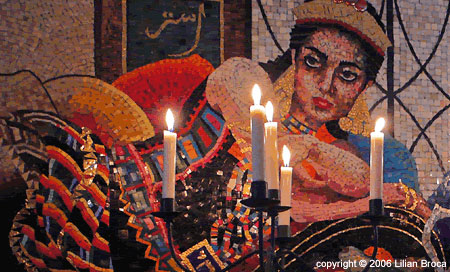
or Smells Like Holy Spirit
A friend recently gave me a unique gift. With some difficulty and great expense, he sourced the ingredients for the anointing oil of the Aaronic priesthood and I was the grateful recipient of a small, blue vial.
The scent of the oil is intoxicating. You breathe it in and in some strange way you can “taste” it as it goes down. It is extremely complex and yet a single fragrance. Continue reading
Comments Off | tags: Ark of the Covenant, Atonement, Covenant Theology, Creation Week, David, Esther, Ezekiel, Genesis, Greater Eve, Incense Altar, James Jordan, Peter Leithart, Resurrection, Saul, Tabernacle | posted in Biblical Theology, Quotes, The Last Days, The Restoration Era
Jan
15
2010
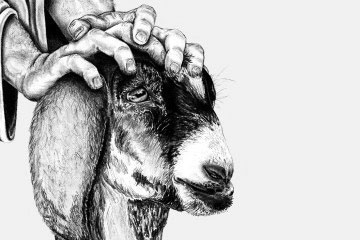
6. Jesus Christ was not judge of the quick and the dead, because (according to preterists) He only judged the dead.
Jesus judged between the living and the dead in AD70. The true bride and the false bride were bodies of living people. Of course, part of the true bride was the Old Covenant saints (those “under the Altar”) who were dead.
Continue reading
4 comments | tags: Atonement, Daniel, David, High Priest, James Jordan, Leviticus, Peter Leithart, Postmillennialism, Saul, Temple | posted in Against Hyperpreterism, Biblical Theology
Jan
13
2010
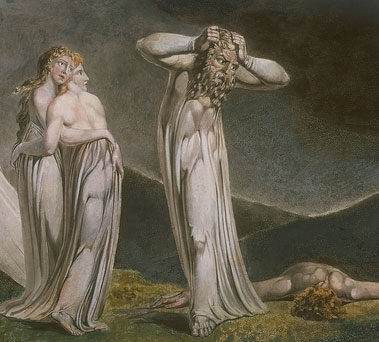
“Peter came to Him and said, ‘Lord, how often shall my brother sin against me, and I forgive him? Up to seven times?’ Jesus said to him, ‘I do not say to you, up to seven times, but up to seventy times seven.’” (Matthew 18:21-22)
Genesis 4 seems to contain two “feast” cycles. Near the end of the first, at “Atonement”, the Lord set a mark upon Cain to protect him from vengeance. As on the Day of Covering after Adam’s sin in Eden, the full weight of the law was withheld. Cain complained that his “liability” was greater than he could bear. Cain was covered but he still went from the presence of the Lord, as the goat which carried the sins into the wilderness. It seems Cain despised mercy.
Just as the Lord and the Land were two witnesses against his crime, he now fled from the face of the Lord and the face of the Land. Only the High Priest could face God, standing in the Veil, the firmament between heaven and earth. Abel was the true facebread, the authorised priest. [1]
Continue reading
6 comments | tags: Abel, Abraham, AD70, Atonement, Azal, Cain, Esau, Genesis, Herod, Jacob, Lamech, The flood | posted in Biblical Theology, The Last Days
Jan
7
2010
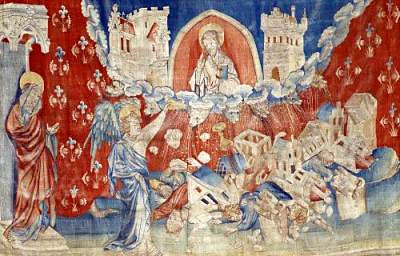
Revelation can’t be fully appreciated without attention to its literary structure. I’m no expert, but have a gander at this…
Continue reading
4 comments | tags: AD70, Atonement, David Chilton, Feasts, James Jordan, Literary Structure, Pentecost, Revelation | posted in Biblical Theology, The Last Days, Totus Christus
Dec
7
2009
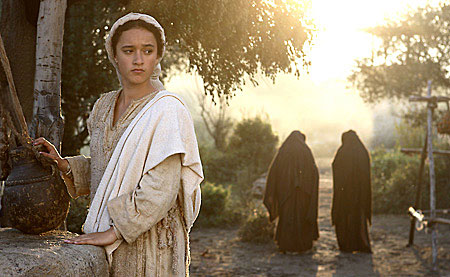
or Receiving the Implanted Word
Mary’s song, like most songs in the Bible, seemed to me to contain mostly extraneous material. My modern mind couldn’t relate her words to the version of Christianity I was familiar with. I guess that’s because it was a version bereft of much understanding of the Old Testament.
Mary’s song seems to follow the matrix pattern. As such, it is a new Creation, and a new Tabernacle, (John 1:14, “dwelt” is literally “tabernacled”). It is the liturgical response of the bride to the promise of Covenant succession – the Covenant succession. This new generation was also regeneration.
Continue reading
Comments Off | tags: Atonement, Azal, Bible Matrix, Christmas, Daniel, Dispensationalism, Feasts, Holy Place, Luke, Mary, Moses, Revelation | posted in Biblical Theology, The Last Days



































